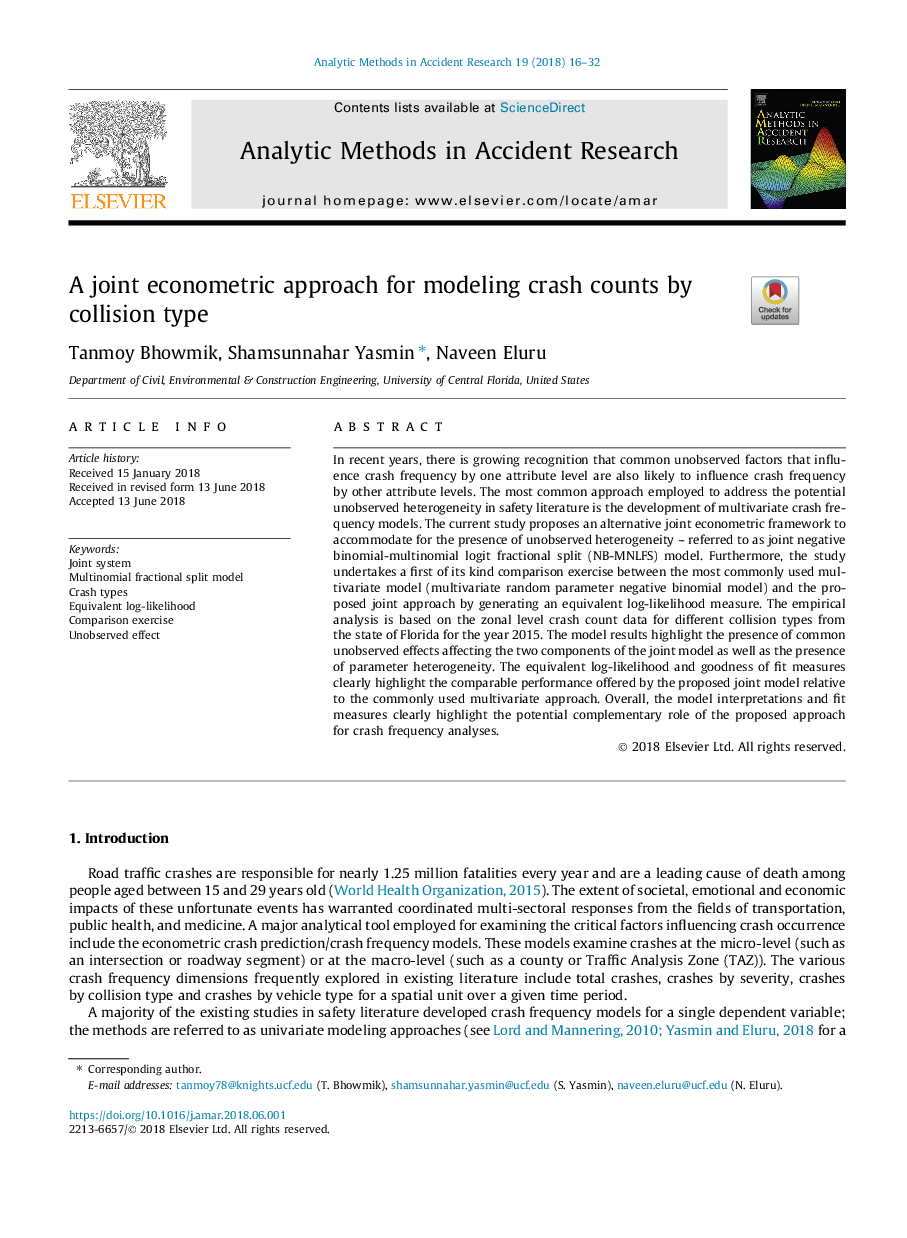| Article ID | Journal | Published Year | Pages | File Type |
|---|---|---|---|---|
| 7534241 | Analytic Methods in Accident Research | 2018 | 17 Pages |
Abstract
In recent years, there is growing recognition that common unobserved factors that influence crash frequency by one attribute level are also likely to influence crash frequency by other attribute levels. The most common approach employed to address the potential unobserved heterogeneity in safety literature is the development of multivariate crash frequency models. The current study proposes an alternative joint econometric framework to accommodate for the presence of unobserved heterogeneity - referred to as joint negative binomial-multinomial logit fractional split (NB-MNLFS) model. Furthermore, the study undertakes a first of its kind comparison exercise between the most commonly used multivariate model (multivariate random parameter negative binomial model) and the proposed joint approach by generating an equivalent log-likelihood measure. The empirical analysis is based on the zonal level crash count data for different collision types from the state of Florida for the year 2015. The model results highlight the presence of common unobserved effects affecting the two components of the joint model as well as the presence of parameter heterogeneity. The equivalent log-likelihood and goodness of fit measures clearly highlight the comparable performance offered by the proposed joint model relative to the commonly used multivariate approach. Overall, the model interpretations and fit measures clearly highlight the potential complementary role of the proposed approach for crash frequency analyses.
Keywords
Related Topics
Physical Sciences and Engineering
Engineering
Safety, Risk, Reliability and Quality
Authors
Tanmoy Bhowmik, Shamsunnahar Yasmin, Naveen Eluru,
